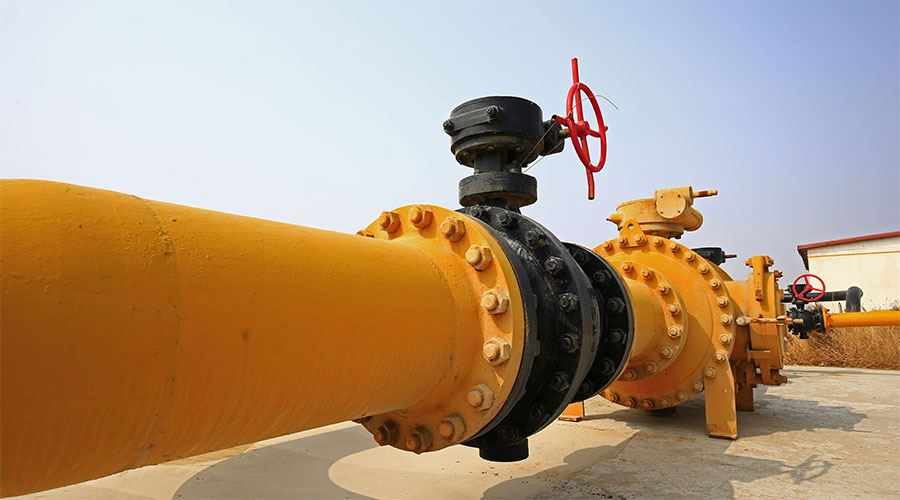Why You Should Invest In Natural Gas
Source: Jared Cummans, ETF Daily News (4/9/12)
"Companies and funds that focus on natural gas producers and extractors stand to gain a fair amount of ground in coming years as pipelines and productions skyrocket."
As gas prices continue to maintain their high levels, consumers are growing tired of surrendering their hard-earned money at the pump. But a break in gasoline prices may not be on the horizon, as the U.S. already pays well below the average of a number of other developed countries around the globe. And if history is any indicator, gas prices will continue to rise until a figure like $9 per gallon is just the norm; it may sound far fetched, but it also doesn't seem like that long ago that you could get a gallon of gas under $2. With crude oil only slated to get more expensive, it seems that many are turning towards natural gas to be the fuel of the future, as its production and use has been surging in recent years.
As an energy source, natural gas has long been useful for appliances like ovens and stove-tops among many other household products. But now, its prevalence in other industries is beginning to spread, as LNG (liquified natural gas) is becoming a viable fuel source for many automobiles. Already, the "California Energy Commission provides $12 million in annual incentives to reduce the initial cost of natural-gas vehicles, linking aid to actual reductions in carbon emissions. The commission also is conducting a $9.6 million solicitation that would add roughly 30 new or upgraded fueling stations" writes Morgan Lee.
The Natural Gas Growth Factor
According to the Energy Information Administration's early Annual Energy Outlook report for 2012, natural gas is set to soar. The EIA cited that the jump in natural gas production will mainly stem from shale deposits, as technology increases and allows for more efficient production. The report predicts that "shale gas production [will increase] from 5.0 trillion cubic feet in 2010 (23 percent of total U.S. dry gas production) to 13.6 trillion cubic feet in 2035 (49 percent of total U.S. dry gas production)". NG's use, which currently accounts for roughly 23% of total electricity consumption in the country, is expected to grow to 27% by 2035.
Other notable predictions come on the production side of the equation, as "the United States is projected to become a net exporter of liquefied natural gas (LNG) in 2016, a net pipeline exporter in 2025, and an overall net exporter of natural gas in 2021". This prediction is based on low costs in the U.S. and a growing demand for LNG in markets outside of North America. Adding to that fact, the report notes that LNG exports are expected to start at 1.1 billion cubic feet in 2016 and increase by an additional 1.1 billion cubic feet per day in 2019.
With all of these rosy predictions, now is certainly the time to invest in natural gas. But this begs the question, why on earth would anyone invest in an asset that has performed so poorly over the last few years? NG prices themselves have been on a downward spiral since the recession, continually sinking to new lows. But cheap prices are not necessarily a negative for all investments. For those looking for direct natural gas exposure, this article isn't for you. Instead, we will walk through companies and funds that focus on natural gas producers and extractors who stand to gain a fair amount of ground in coming years as pipelines and productions skyrocket. While a high price for the commodity could obviously benefit these companies, low levels certainly will not dampen their growth prospects given the need for this fuel around the world.
Jared Cummans, ETF Daily News
As an energy source, natural gas has long been useful for appliances like ovens and stove-tops among many other household products. But now, its prevalence in other industries is beginning to spread, as LNG (liquified natural gas) is becoming a viable fuel source for many automobiles. Already, the "California Energy Commission provides $12 million in annual incentives to reduce the initial cost of natural-gas vehicles, linking aid to actual reductions in carbon emissions. The commission also is conducting a $9.6 million solicitation that would add roughly 30 new or upgraded fueling stations" writes Morgan Lee.
The Natural Gas Growth Factor
According to the Energy Information Administration's early Annual Energy Outlook report for 2012, natural gas is set to soar. The EIA cited that the jump in natural gas production will mainly stem from shale deposits, as technology increases and allows for more efficient production. The report predicts that "shale gas production [will increase] from 5.0 trillion cubic feet in 2010 (23 percent of total U.S. dry gas production) to 13.6 trillion cubic feet in 2035 (49 percent of total U.S. dry gas production)". NG's use, which currently accounts for roughly 23% of total electricity consumption in the country, is expected to grow to 27% by 2035.
Other notable predictions come on the production side of the equation, as "the United States is projected to become a net exporter of liquefied natural gas (LNG) in 2016, a net pipeline exporter in 2025, and an overall net exporter of natural gas in 2021". This prediction is based on low costs in the U.S. and a growing demand for LNG in markets outside of North America. Adding to that fact, the report notes that LNG exports are expected to start at 1.1 billion cubic feet in 2016 and increase by an additional 1.1 billion cubic feet per day in 2019.
With all of these rosy predictions, now is certainly the time to invest in natural gas. But this begs the question, why on earth would anyone invest in an asset that has performed so poorly over the last few years? NG prices themselves have been on a downward spiral since the recession, continually sinking to new lows. But cheap prices are not necessarily a negative for all investments. For those looking for direct natural gas exposure, this article isn't for you. Instead, we will walk through companies and funds that focus on natural gas producers and extractors who stand to gain a fair amount of ground in coming years as pipelines and productions skyrocket. While a high price for the commodity could obviously benefit these companies, low levels certainly will not dampen their growth prospects given the need for this fuel around the world.
Jared Cummans, ETF Daily News


























































